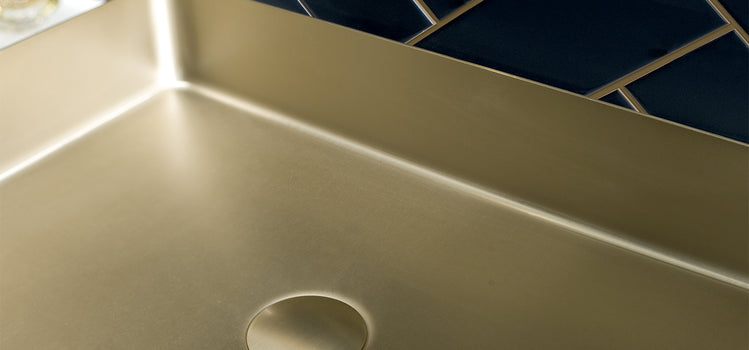How to Repair a Clogged Kitchen Drain
The accumulation of grease and food residue often leads to clogged kitchen drains, as grease tends to solidify over time, impeding the flow of water. However, you don't necessarily have to resort to calling a plumber when faced with a clogged drain. There are several effective methods to clear the obstruction and restore proper drainage. Here are five approaches to unclogging a kitchen drain.
Method 1 - Boiling water
Before resorting to a plunger, utilizing hot water is an effective method for clearing clogged drains.
Supplies required
1. Water 2. Kettle Boiling water is an effective solution for dissolving blockages, particularly those caused by grease buildup in kitchen drains. However, if your tap water doesn't run hot enough, you can heat water using a kettle or another suitable vessel. A word of caution: Avoid heating water in ceramic pots, as they may crack due to sudden temperature changes. Additionally, if your pipes are made of plastic, refrain from using boiling water as it can soften or damage them. In such cases, it's advisable to use a plunger to clear the blockage safely.
Method
Boil one liter of water in a kettle. Then slowly pour the hot water down your drain. If the hot water does not dissolve the blockage, you can use a plunger.
Method 2: Drain Plunger
For clearing clogs in your kitchen sink, it's essential to have the appropriate plunger. The cup plunger is highly recommended for this purpose due to its effectiveness..
Method
1. Fill the sink bowl with a few inches of water until it covers the plunger cup. 2. Position the plunger over the drain opening, ensuring a tight seal is formed. 3. Employ short, vigorous plunging motions to pump the plunger up and down multiple times. Repeat this action several times to dislodge any clogs. 4. Once the clog is removed, turn on the faucet and let water flow for approximately a minute to flush out the drain.
Method 3: Sink Auger For Stubborn Stains
The cup plunger may not be able to unclog your drain.
Method
1. Remove the stopper from the drain to access the opening fully. 2. Securely attach the auger cable to the drain opening, ensuring it is properly inserted into the bracket. Tighten the set screw located on the auger canisters to secure the cable in place. 3. Rotate the crank handle in a clockwise direction while gently guiding the cable into the drain. Avoid applying excessive pressure to the cable. Twisting the cable can help break up any blockages and navigate bends in the pipe, reducing the risk of the cable getting stuck. 4. Continue turning the crank handle until the cable loosens the blockage. This method is particularly effective for dislodging clogs located in the trap. 5. Once the blockage is cleared, carefully retract the cable from the pipe and return it to the canister. Be prepared to encounter debris as the drain clears. 6. Repeat the process as needed until the blockage is completely removed. 7. Immediately flush the drain by running hot water through it from the faucet to ensure proper drainage.
Method 4 - Remove the Drain Trap to Auger the Branch Drain
If the obstruction persists after stretching the cable through the trap, it may be a branch drain of a wall or a vertical drain.
Supplies required
1. Bucket 2. Sink Auger 3. Pipe Wrench Even though accessing the trap may require additional effort, it is entirely feasible with the right tools and technique.
Method
1. Place a bucket underneath the trap to catch any water that may spill out. 2. Utilize tongue and groove pliers or a pipe wrench to loosen the slip nuts. These nuts may have nylon washers, which are easily replaceable. 3. Empty any water present in the trap into the bucket by loosening the ends of the pipe. 4. Insert the sink auger cable horizontally into the drain pipe. Ensure the set screw is tightened, and gently apply pressure to navigate any bends. 5. Clear the blockage by feeding the cable further into the drain. 6. Once the clog is removed, retract the cable from the drain. 7. Reassemble the drain trap, ensuring all connections are secure. Finally, run hot water down the drain to flush out any remaining debris..
Method 5 - Should Chemical Drain Cleaners Be Used?
Using chemical drain cleaners may seem like a convenient solution to clear a blocked kitchen drain. However, it's important to consider the drawbacks before resorting to this method. While chemical cleaners promise quick results, they pose several risks to both the environment and your kitchen plumbing system. These harsh chemicals can cause damage to pipes over time, leading to costly repairs. Additionally, the fumes emitted by these cleaners can be harmful to your health, especially if inhaled repeatedly. Moreover, chemical drain cleaners are often ineffective at fully removing blockages. Instead of solving the underlying issue, they may leave behind residual debris, exacerbating the problem in the long run. In summary, while chemical drain cleaners may offer a temporary fix, they are not recommended for clearing kitchen drain blockages due to their harmful effects and limited efficacy. It's best to explore safer and more effective methods, such as mechanical drain cleaning techniques, to address clogs in your kitchen sink.
If you're interested in learning more about kitchen waste disposal techniques, you might find this comprehensive guide on Unveiling the Elegance of Gold in Kitchen Waste Disposal useful. It provides valuable insights into effective waste management strategies that can help maintain a clean and functional kitchen.



